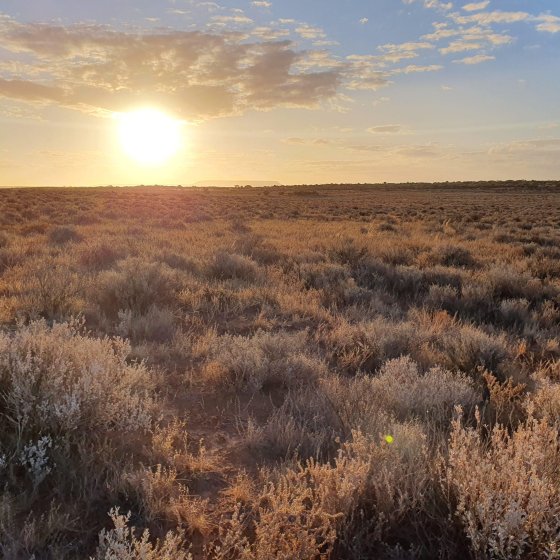- Home
- Environmental Themes
- Land
- Pressures and Responses
- Climate Change
Climate Change
Pressures
- Fire – Harsher fire weather will be experienced, and fuels will be drier and more ready to burn.
- Rain – Average annual rainfall will decline.
- Heat – The frequency of very hot days will continue to increase, and periods of hot weather will get longer and temperatures hotter.
- Drought – Time spent in drought will increase.
- Flood – The number and intensity of heavy rainfall events will increase.
Source: Guide to Climate Projections for Risk Assessment and Planning in South Australia 2022
Impacts
- Bushfires result in the destruction of habitat and biodiversity. The 2019–20 bushfires burnt 278,000 hectares of land across the Adelaide Hills, Kangaroo Island and Yorketown. This also impacted tourism, primary producers, viticulture and forestry.
- Less moisture in soils from reduced rainfall or hot temperatures may lead to an increase in erosion and loss of soils via wind and rain. Bushfires and flooding may also increase the risk of soil erosion. This may also result in changes to the composition of soils and soil properties, which may affect land productivity for crops and livestock.
- There may be impacts to native wildlife and plants due to reduced water availability, heat stress and/or destruction of habitat. This may also result in population decline for some species either via a reduction in breeding or mortalities or result in spatial shifts of species.
- Native vegetation not adapted to flooding may be destroyed. Floods can also impact fauna species that are not easily able to move, for example, wombats, reptiles, possums and koalas, either directly via inundation of their habitat or by affecting food availability.
Responses
- Prescribed burns and cultural burns help manage the ecological health of habitats and protect them from bushfire risks and invasion of feral species by reducing fuel loads and promoting the growth of native vegetation. Cultural burns are also an integral part of Aboriginal culture in looking after and connecting with Country. There is a growing awareness of the importance and value of cultural burns for caring for Country.
- A study was completed by DEW to investigate the impacts of 11 bushfires that occurred between 2005 and 2011. Results showed there was little change in soil properties caused by cool-to-moderate fires. However, changes were detected for hot burns. Erosion, or the risk of erosion, did increase for the majority of fires.
- A wildlife and habitat bushfire recovery taskforce was set up after the 2019–20 bushfires. Also, SAVEM | South Australian Veterinary Emergency Management responds to animal welfare issues.
- South Australia’s Government Climate Actions include objectives relating to agriculture, landscapes and habitats such as:
- supporting the agriculture sector to adapt, innovate and reduce net emissions
- supporting expansion of carbon farming and blue carbon
- ensuring secure, climate-resilient regional and urban water supplies
- building the climate resilience of landscapes, habitats and natural resources.
- PIRSA is working with primary industry sectors to facilitate:
- productive and resilient field and irrigated crops, including new crops for farming systems
- adaptable pasture systems and regenerative agriculture
- emissions reduction in livestock through feed supplements and feed changes
- carbon sequestration for forestry production.
- Regional climate partnerships between various agencies have been established to deliver practical actions that will strengthen the climate resilience of communities, economies and natural and built environments. There are 11 partnerships consisting of Adapting Northern Adelaide, AdaptWest, Barossa, Eyre Peninsula, Far North, Limestone Coast, Murraylands & Riverland, Northern and Yorke, Resilient East, Resilient Hills & Coasts and Resilient South.
- A Carbon Farming Roadmap 2022–26 has been produced for South Australia to identify opportunities and increase participation in carbon farming.
